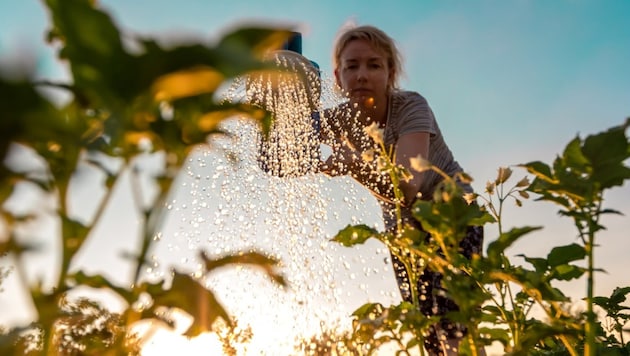Hobby gardeners should have already done a good amount of preparatory work in March. The most important part of gardening begins in April. Read here what you need to pay attention to in the garden.
In March the focus was on the pitch. Hobby gardeners raked, scarified, limed and freed this from weeds.
If you haven’t done this yet, you should get to work by the first two weeks of April at the latest. The goal should be: The lawn should be mowed for the first time by May at the latest.
Also check whether garden waste is collected by the municipality in your area. In most cases, you can have moss, weeds and entire pieces of lawn deposited at specified locations and picked up.
If you strictly stick to the usual schedule, you will start fertilizing and sowing in April. This is one of the reasons why April is one of the most important months in the gardening year. However, hobby gardeners should particularly keep an eye on the weather. Anyone who sows their first seeds should always protect the plants from frost or extreme heat.
Shrubs and perennials that have been in your garden for years should now be supplied with nutrients. These plants generally require more processing time.
If you don’t care for these old garden friends properly, you risk that shrubs, plants and trees will only bloom sparingly and therefore develop few fruits. Watering is more important than ever in April. Especially at the end of the month when the temperatures rise significantly. In order not to expose plants to unnecessary stress, it helps to only water them in the morning.
In addition, snails are more attracted to the moist soil in the evening. The result is an unwanted snail plague in the garden.
As the main sowing and planting month, April is ideal for sowing chard, peppers, lettuce, spinach, culinary herbs, early potatoes or wild garlic.
When you are ready, seeds and plants go into the bed. It is important that you water the early seeds well and protect them from drops in temperature, extreme heat and hungry snails.
Pumpkins, zucchini, cucumbers and tomatoes can now be planted safely indoors, explain the gardening experts from “Gartengemüsekiosk”. Later you can grow the plants in a polytunnel (tomatoes) or outdoors (zucchini or pumpkin). The same applies here: don’t forget to water regularly.
Pay attention to shady and non-shady spots in the garden. Cabbage, for example, always needs full sun. Broccoli, radishes and peas also grow in the shade.
Before you plant the seeds, you should prepare the garden soil accordingly:
Rake the dry soil well with a harrow and remove weeds, stones and roots. You can loosen up compacted soil with a layer of sand and compost.
To prepare the bed accordingly, it helps to use a groover or tracer. You can also easily build this yourself. To do this, simply use a standard rake.
Cut even 15 centimeter long pieces from an old garden hose and insert them into the rake tips at the appropriate intervals. To align the first line where you want to draw the grooves, you can use an iron rod. Place it on the ground and move it back and forth to create a slight indentation. Simply run the groove puller along here and you will have even seed marks.
The original for this article “Four gardening tasks are particularly important in April” comes from chip.de.









